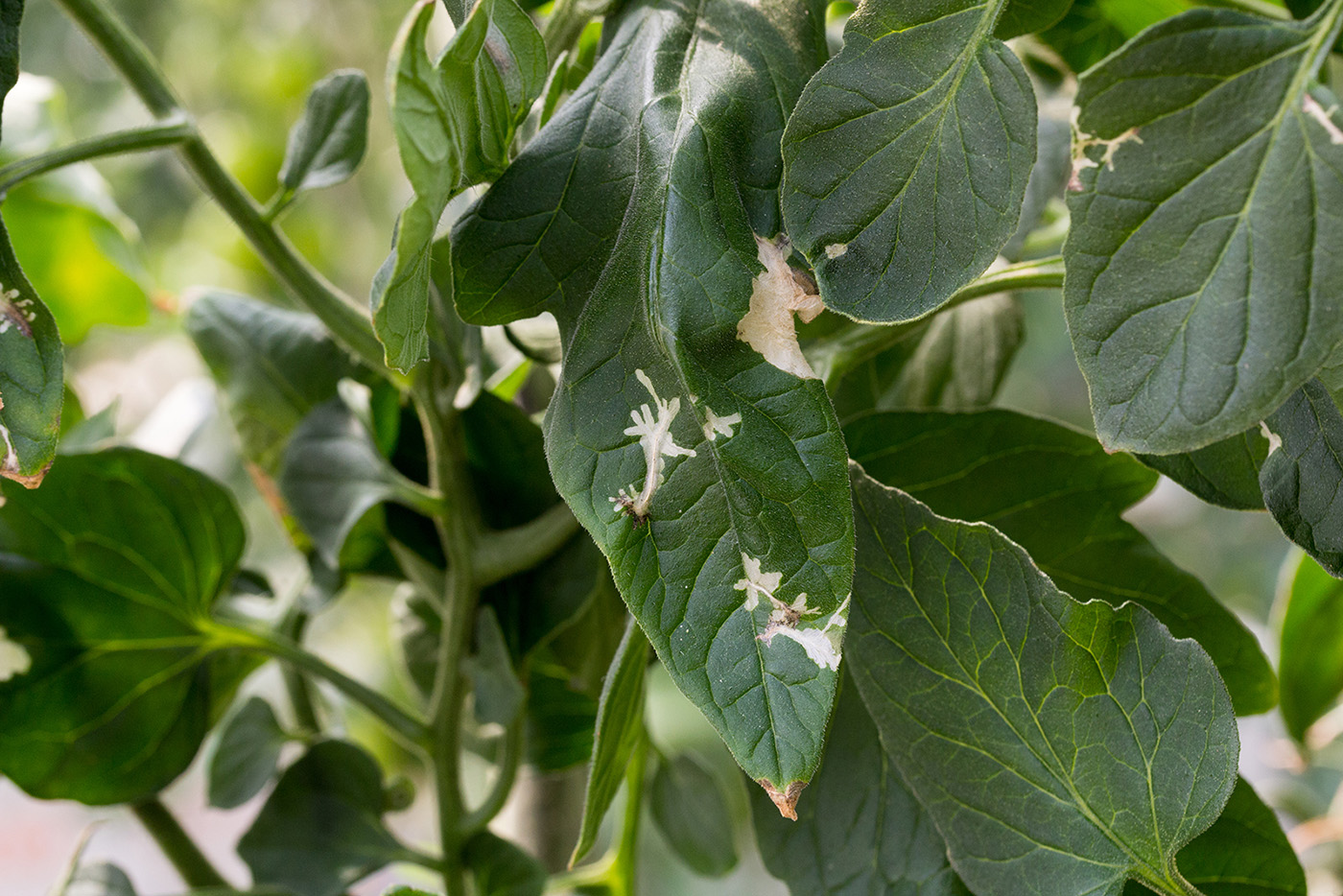Tuta absoluta is a species of moth in family Gelechidae known by common name tomato leaf miner or tomato pin worm. Tuta is a serious and devastating pest of tomatoes and a major concern in tomato growing zones of Kenya including parts of Kirinyaga, Embu, Loitoktok /kajiado areas and Lower eastern parts. Not only challenging the growers but contributing to over 20% of post harvest yield losses in tomatoes.
The life cycle of the pests is in four developmental stages of egg, larvae, pupa and adult.
Adults lay eggs on underside of leaves or fruits, after hatching the larvae penetrate leaves where they feed and develop producing large galleries, burrowing In stalks and consuming apical buds, green and ripe fruits. It’s capable of causing 100% crop loss. Pupae usually 5-6mm in length are cylindrical and greenish and turn darker as they approach adulthood.
Adults moths are 6-7 mm in length and have filiform antennae and grayish to silvery scales. Usually they are nocturnal and remain hidden during the day and disperse to crops by flying.
Host range
Tuta absoluta has a variety of host range within the solanaceae family but tomatoes (lycopersicon esculentum) is the primary host and the pests favorite. Other crops include nightshades, potato, eggplant, pepino, pepper and tobacco.
Pest management
Pest management is critical to avoid 100% crop losses as well as ensure pests are at manageable levels. Both chemical and cultural methods are used, though the biggest challenge is fast development of resistant strains for the larvae and adults.
Field hygiene is a critical component of pest control strategy which includes proper crop debris /remains disposal, clean field and surrounding.
Crop rotation with non solanaceae family has also proved to be critical in ensuring the pest cycle outlined above is broken.
Chemical control continue to provide a fast and reliable method. Chemical control starts early in the crop seasons and continues throughout to keep off moths as well as eliminate the destructive larvae.
Occasion Star® 200 SC at a rate of 5mls/ 20lts mixed with Integra® at a rate of 3mls/20lts has been ranked as a top systemic product for eliminating the larvae. Proper management includes alternating the Occasion Star® 200 SC with Lexus® 247 SC at a rate of 8mls/20lts which is best on the adult moths.







